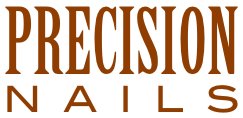One of my most popular classes, “Clients Behaving Badly” begins with a simple, but powerful, statement: Bad clients are not worth having. If this class were an interactive discussion about the worst clients ever (read: bitch session), this statement would be considered a logical conclusion. However, the class does not focus on bad clients. Despite the title, I share strategies on building a clientele based on the premise that bad clients are not worth having. Clients form the foundation of your salon business; the stronger the foundation, the stronger your business.
Rather than entreat you, as many would, to provide better customer service, I encourage you to provide quality services to better customers. There are far more consumers/customers/potential clients than beauty professionals, and this gives us a tremendous advantage. That advantage is the power of choice. Choosing who to serve and who to refuse/refer elsewhere may seem incompatible with providing good customer service. But what’s truly incompatible is the misguided notion that we’re somehow obligated to serve/please everyone. No one can demand service from you, though some may treat you as if they could. That’s as absurd as the notion that the customer is always right. Your value as a beauty professional lies in your expertise; clients pay you for being right. When having the clients you want makes giving them what they want that much easier, why not actively pursue the ideal clients for your salon business?
“The purpose of a business is to create a mutually beneficial relationship between itself and those that it serves.” (John Woods). Many beauty professionals consider client relationships one of the most rewarding, yet most challenging, aspects of their work. Every client is a relationship; some will flame out within their first and only appointment, while others may last through hundreds of appointments over decades. It’s not reasonable to expect that every person who contacts your business will become one of your best clients. (Likewise, not every person you meet will become your best friend.) Communicating what your salon offers to and expects from clients encourages compatible potential clients to contact you, while discouraging others from wasting your time.
Building relationships requires effort and resources that should not be wasted on those who don’t respect you as a beauty professional. When reflecting on my own clientele, I keep this in mind: “I don’t build in order to have clients. I have clients in order to build.” (Ayn Rand). The following statement, posted several years ago to my salon website, summarizes my approach to client relationships:
We believe that receiving a salon service should be a safe and pleasant experience for the consumer. Conversely, we believe that the beauty professional providing the service also deserves a safe and pleasant experience. Our salon does not suit every consumer, nor does every consumer suit us. To be blunt, we will refuse service to those who do not.
After 17 years of providing nail services, we have more than enough experience to know who best suits us. Our ideal client exhibits these qualities:
- insists on trained and licensed professionals;
- respects our time;
- expects a clean, organized salon environment;
- appreciates quality more than convenience;
- enjoys our salon experience;
- schedules in advance;
- values our professional opinions;
- encourages our efforts to improve our skills;
- supports our commitment to the beauty industry;
- and refers family and friends.
Within an industry that treats consumers and professionals as disposable, Precision Nails thrives because we respect ourselves and value our clients, particularly our Preferred Clients (those with standing appointments).
As expected, this statement generated some insightful discussions and prompted some (less than ideal) clients to seek services elsewhere. Mission accomplished.
When clients behave badly, it’s time to question your judgment and evaluate your contribution to the problem. The reason why clients behave badly is very simple - because you let them. You continue to schedule them even as they arrive late or miss appointments entirely, criticize your work, complain about the price, etc. What’s the incentive for good behavior when you keep rewarding bad behavior? Serving your clients should make you feel good about yourself, professionally and personally. I sincerely hope that you wouldn’t tolerate an unhealthy professional relationship anymore than you’d tolerate an unhealthy personal relationship. You deserve better, but unless you’re willing to act, you’re not likely to get it.
My best advice for losing bad clients? Simultaneously change your schedule and raise your prices (even minor changes will do). If you haven’t already done so, develop salon policies and procedures and be prepared to enforce consequences. Give your clients at least a month’s notice that you’ll be canceling all future appointments to rebuild your new schedule. Reward your best clients by giving them priority as you fill your new schedule. Do NOT schedule bad clients; when they realize that you’re no longer willing to tolerate their behavior, they’ll go elsewhere. Who you choose to serve, and when, is your business, literally.
By Jaime Schrabeck, Ph.D.



